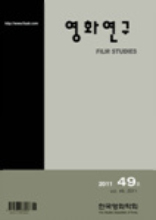- 영문명
- Present Status and Future Vision of Film Education in Overall Arts & Culture Education
- 발행기관
- 한국영화학회
- 저자명
- 민경원
- 간행물 정보
- 『영화연구』제49호, 29~59쪽, 전체 31쪽
- 주제분류
- 예술체육 > 예술일반
- 파일형태
- 발행일자
- 2011.09.30
6,520원
구매일시로부터 72시간 이내에 다운로드 가능합니다.
이 학술논문 정보는 (주)교보문고와 각 발행기관 사이에 저작물 이용 계약이 체결된 것으로, 교보문고를 통해 제공되고 있습니다.

국문 초록
영문 초록
The arts & culture education that began in 2005 has brought about diversity of school arts & culture education in many respects for 7 years. The core of all education consists in the students who enjoy education and accept and develop arts & culture education. The purpose of arts & culture education is set in proper direction when they recognize and utilize the objectives and needs of arts & culture education properly. Arts & culture education has been expanded to a total of 8 areas by adding 3 areas of photograph, design, and crafts from 2010 to the existing 5 areas of theater, film, animation, dancing, and Korean traditional performing arts. However, it cannot be said that arts & culture education develops just because the genres of arts & culture education are expanded. How adequately the educational contents are organized, how properly the instructors are conveying the educational contents, and how actively students are participating in the education need to be examined. Particularly, the following two factors are urgent problems that should be solved anytime soon in order to attain film education. First, ‘teaching materials’ should be developed. It is reality that elementary and intermediary film education has been conducted with teaching plans prepared at the instructor’s discretion without film textbooks. The development of moving image data teaching aids and some teaching materials has been under way but the reality is that there are no official film education textbooks. Film textbooks should be developed and established anytime soon so that film education by differentiated level can be implemented and actively utilized in the film education fields. Second, ‘creative teaching method’ should be developed. Film art instructors’ training programs should be organized so that creative education by creative power teaching method can be attained, instead of just focusing on simple routine training. Arts & culture education that is based on creative writing should be approached differently from other general subject of studies education. ‘It is nothing particular. Isn’t it a creative teaching method since it is based on creative writing? Such preconceived notion should be discarded. In arts & culture education, it is the film education that should be conducted by systematizing creative teaching method so that the students’ imagination can be developed infinitely and applied to all the areas of daily life. And it should help the student grow as well-rounded persons contributing to society, if not necessarily grow as artists. Creative teaching methods should be applied to all aspects of arts & culture education in the school educational fields so that the students can enjoy arts & culture education pleasantly. Particularly in film education, educational activities encompassing entire moving image media should be developed and the concept of one-source-multi-education, the characteristics of film, should be expanded and developed to classes connected to diverse school educational courses of studies, and this is the purpose that film education as arts & culture education should pursue.
목차
1. 서론
2. 문화예술교육의 탄생배경
3. 문화예술교육의 정의
4. 문화예술교육으로서 영화교육의 시작
5. 결론
키워드
해당간행물 수록 논문
참고문헌
관련논문
예술체육 > 예술일반분야 BEST
- 생성형 AI 도구와 디자이너의 협업 프로세스 개발 - 이미지를 통한 아이디어 확산에서 고해상도 렌더링까지
- ‘일과 삶의 균형(Work-Life Balance)’ 척도 개발을 위한 연구
- 디자인 전공 교과목에서의 생성형 AI 도구 활용 사례 연구
예술체육 > 예술일반분야 NEW
- 한국영화의 촬영과 조명 시리즈 2: 영화 '형사, Duelist'의 Visual Concept 및 조명플랜
- 포스트모더니즘적 영상표현에 관한 연구 -실사 영화와 애니메이션 영화의 상호작용을 중심으로-
- 소니 HVR-Z1N 카메라의 중요한 메뉴에 관한 소고
최근 이용한 논문
교보eBook 첫 방문을 환영 합니다!

신규가입 혜택 지급이 완료 되었습니다.
바로 사용 가능한 교보e캐시 1,000원 (유효기간 7일)
지금 바로 교보eBook의 다양한 콘텐츠를 이용해 보세요!


